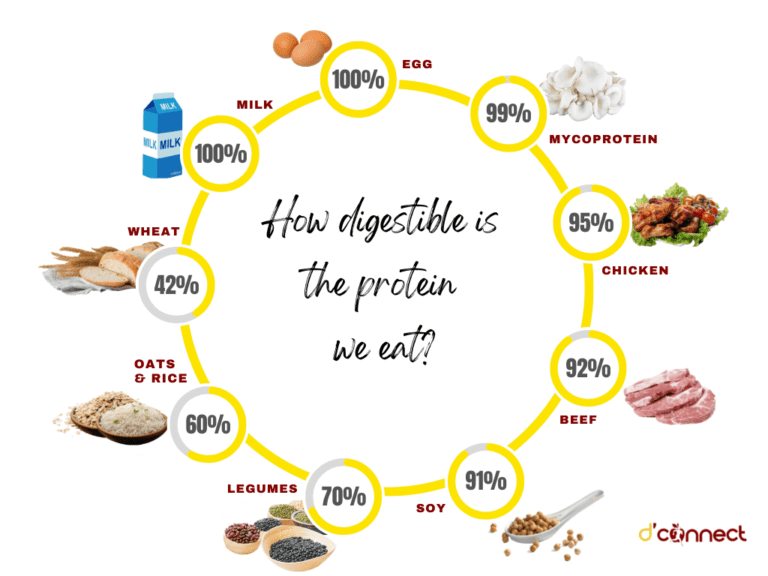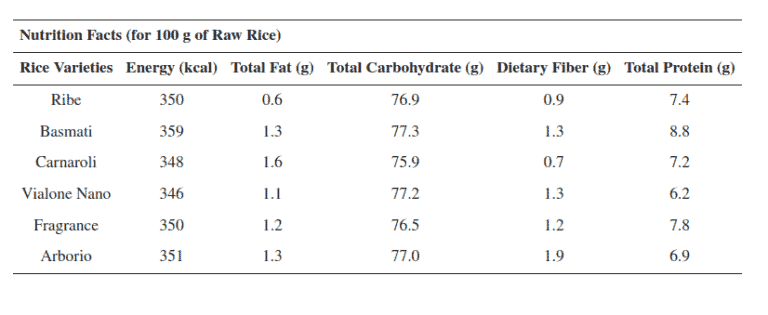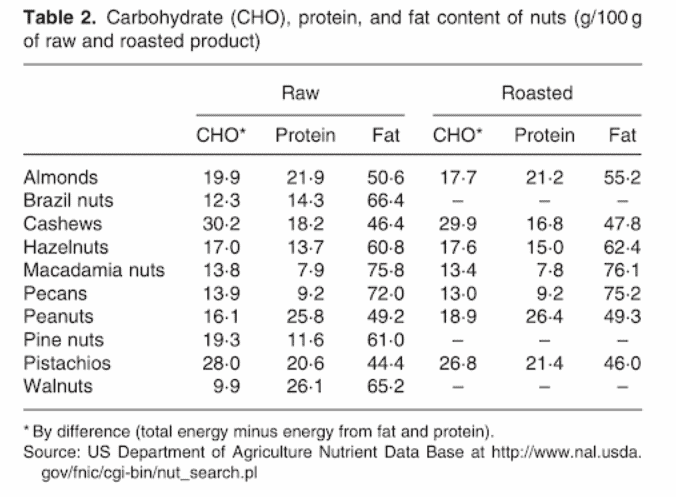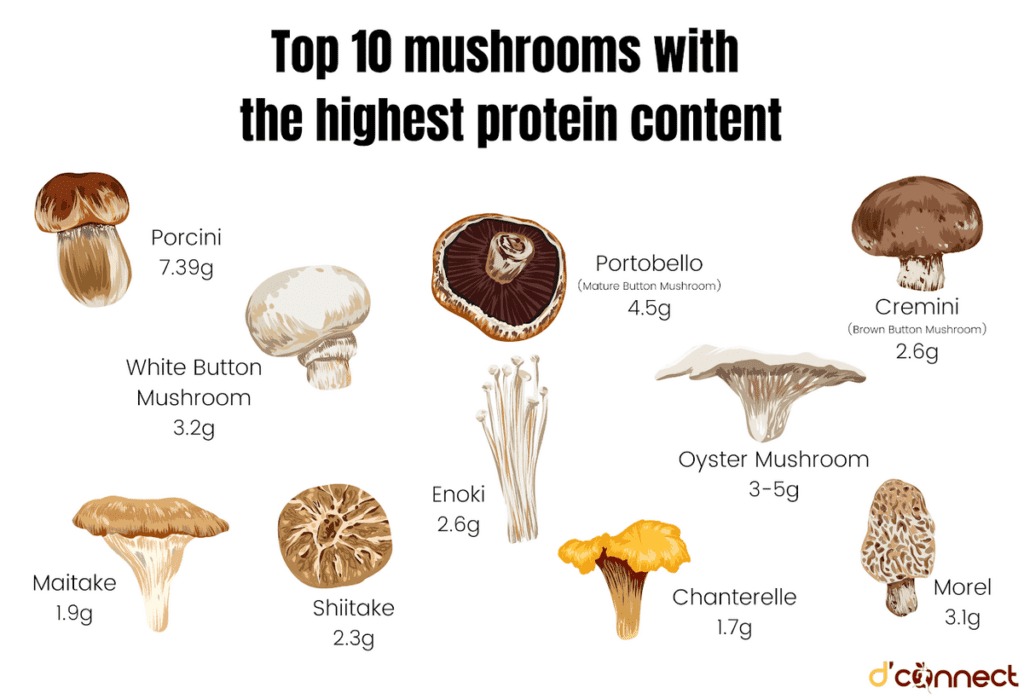
Stephanie Glass
(BFoodTech, DipBusL7, CHLC, MBP)
While a plant-based diet is a great way to enhance our health, there is a difference between unprocessed plant-based foods and manufactured products that are considered plant-based.
This in particular relates to replacing animal protein with plant-based protein, and many of us are not aware that
- protein digestibility
- antinutrients (found in plants)
- amino acids profile
play an important role in how much protein we actually absorb through our diet.
Today we will look into this in more detail and also share which unprocessed plant-based proteins we can consume to complement our diet.
Difference between plant and animal protein
When we are planning to reduce meat in our diet by including more vegetables, we need to look at the protein content that is present in different plant-based products.
This is because plant proteins don’t have the same amino acid profiles and bioavailability (the proportion that is available for our body to digest and absorb) that animal protein sources have.

Plant proteins have a more complex structure than animal protein which makes it harder for the enzymes to break it down.
Also, the presence of fibre and antinutrients (mainly in legume hulls and nuts/seeds) can also reduce the protein digestibility.
Proteins are made of amino acids
There are 20 amino acids that create all of the proteins, enzymes and structures in our body. Amino acids can be categorized in two groups
- Essential amino acids
- Non-essential amino acids
Essential amino acids are those that our body cannot synthesize on its own and need to be supplied through our diet. There are 9 essential amino acids (EAA) and 11 non-essential amino acids (non-EAA).
RELATED — What are Amino Acids and what is their role in keeping us healthy?
Not all amino acids are needed in the same amount
Amino acids are needed in a specific ratio for our body to function optimally.
Animal protein is considered complete protein because it provides all essential amino acids (EAA).
Plants, however, have different structures to animals and their proteins and amino acid ratios are different. All plants have all the amino acids but not all of them have the EAA in the proportion we need.
When a plant has a smaller amount of a EAA than we require, those amino acids are referred to as limiting amino acids. To ensure that all the EAA are consumed in the correct proportion, a combination of plant protein sources should be eaten.
Food | Limited Amino Acid | Complement |
Beans | Methionine | Grains, nuts, seeds |
Grains | Lysine, threonine | Legumes |
Nuts/Seeds | Lysine | Legumes |
Vegetables | Methionine | Grains, nuts, seeds |
Corns | Tryptophan, lysine | Legumes |
The table above shows the main plant groups, their limiting amino acids and the complement group or foods that we should add to our diet to have access to all amino acids.[1]
Soy protein
Soy was one of the first complete plant-based proteins that the food industry started using in the products.
However, this popularity came with a cost. An increased demand has led to GMO soy variations becoming the main source of soy.
GMO soy is resistant to glyphosate - a powerful pesticide
Extensive research has been done on the
- adverse effects of glyphosate on human health
- soil nutrient depletion and ecosystems
which now questions the real nutritional value and ethical footprint of soy. However, there are still non-GMO varieties and these are recommended over the GMO ones.

Soy protein has a high digestibility score and is considered a complete protein, having all essential amino acids.
Below are different soy products and links to some of our nutritious recipes:
- Tofu – made by coagulating and pressing soy milk into a block (similar to producing cheese)
- Tempeh – made of cooked soybeans that have been combined with a specific mould that helps the beans bind.
- Textured vegetable protein (TVP) or soy meat – made of soy flour that remains after the oil extraction. It’s a dry extruded product high in protein and low in fat.
- Impossible meat – this is a soy-based meat alternative made of soy protein concentrate, oils, flavours and fortified with minerals and vitamins.
SUMMARY - soy-based products are a source of complete protein with high bioavailability. Always look for organic or non-GMO variants.
Wheat gluten protein
Gluten is a composite of two proteins (glutenin and gliadin) present in wheat, rye and barley. When mixed with water, gluten creates a stretchy structure that when cooked becomes solid, holding the shape it is given.
Plant-based manufacturers of alternative meat process gluten with other ingredients or flavours to create meat alternatives (commercially known as seitan) that resembles cooked chicken.
Wheat is limited in the amino acids lysine and threonine
Compared to whole grain wheat, gluten has a higher bioavailability and it doesn’t contain fibre and antinutrients.
In recent years, gluten has become a controversial source of protein and many consumers choose to go gluten-free even when they are not coeliac or allergic to wheat.
RELATED — Coeliac Disease: Symptoms and Effects on our health and body
Sensitivity to gluten has increased in the last decades, which could be caused by the increased amount of gluten in highly processed diets in comparison to balanced and varied diets.
Gluten can initiate an inflammatory response in the gut that damages the lining and can lead to leaky gut, a condition that can cause immune responses in other parts of the body.[2]
SUMMARY - wheat gluten is high in protein and has a higher bioavailability compared to consuming the whole grain. Gluten can cause sensitivity that leads to inflammation.
Oats and rice protein
Currently oats and rice are not used as direct meat alternatives, however, they do have a considerable amount of protein.
Oats have been mainly used in the plant-based industry to produce plant-based milk and dairy products (yogurt and ice cream).
Oats protein content ranges between 10 and 15% and can be used as an alternative to wheat for gluten-free preparations (note that oats do not contain gluten but cross contamination often occurs).
Oats are a great source of soluble fibres that are beneficial to gut and cardiovascular health.[3]
Rice has a lower protein content than oats, ranging from 6 to 8% but it is comparatively higher in lysine which is the limiting amino acid in cereals.[4]

Rice protein powder is extracted and used for protein supplement powders, sometimes coupled with pea protein powder, which creates a complete protein. Protein powders have a better digestibility than the whole grains.
Just like wheat gluten, these two sources are cereals and are therefore best to be complemented with legume protein to ensure that all essential amino acids are consumed in the correct ratio.
SUMMARY - oats are relatively higher in protein content compared to other cereals and are additionally a source of soluble fibre. Rice protein is mainly used for protein powders and can be combined with pea protein.
Legume protein
Legumes are a large and varied group of plants, from soy to peanuts, lentils, beans and chickpeas. Some have a higher composition of fats (like peanuts), protein (like soy) or carbohydrates and fibre (like beans).
Legumes are limited in the amino acid methionine
This is why it’s best to ensure that we include different nuts, seeds or cereals/grains to our diet as well.
Legumes contain fibre structures that surround some of their protein and antinutrients that protect the valuable protein from being damaged by environmental factors. This makes them harder to digest and reduces protein uptake.[5]
To increase the bioavailability of protein, soaking or sprouting can help reduce the amount of antinutrients.
Beans and Legumes | Servings | Proteins / Grams |
Tempeh, non-GMO, cooked | 1 cup | 31 |
Soybeans, non-GMO, green, cooked | 1 cup | 22 |
Tofu, non-GMO, firm cooked | 1 cup | 20 |
Lentils, cooked | 1 cup | 18 |
Edamame, non-GMO, frozen, prepared | 1 cup | 17 |
Lima beans, cooked | 1 cup | 15 |
Kidney beans, cooked | 1 cup | 15 |
Pinto beans, cooked | 1 cup | 15 |
Navy beans, cooked | 1 cup | 15 |
Other processes implemented by the food industry also help increase bioavailability, such as extraction of protein isolate from peas.
This method has become widely used in plant-based products, including popular meat alternative products.
Pea protein is also used for plant-based protein powders, shakes and bars as a supplement and can be a lean source of protein.
SUMMARY - legumes are a good source of protein that come packed with fibre. They are best to be complemented with grains or nuts/seeds to consume adequate amounts of complete protein.
Nuts and seeds protein
This food group is known for its content and source of healthy fats and antioxidants, but their protein is of great value as well.
RELATED — Anti-cancer foods: The Healthiest Nuts
Seeds and nuts are a powerhouse of nutrients as they essentially have all the nutrients needed to grow an entire plant or tree.
The protein content of tree nuts varies between 10 and 26%.[6]
Although protein content is high, the biological value is below optimal because nuts too have limiting amino acids, mainly lysine.

However healthy nuts are, and the multiple benefits their consumption provides, they are best eaten in moderation because of the high fat content.
RELATED — Types of Fats: Healthy and Unhealthy Dietary Fats
Additionally, the most efficient way to absorb all of the nutrients from nuts and seeds is by soaking and rinsing. This reduces the presence of antinutrients that are “guarding” the vitamins and antioxidants.
Ground nuts and seeds, specifically, are not recommended unless consumed immediately as the mechanical process exposes the very delicate polyunsaturated oils to air causing them to oxidize and lose their properties.
Seeds too are a good source of protein. Most commonly consumed due to higher protein content are
- pumpkin seeds
- hemp seeds
- sesame seeds[7]
However, they are also limited in lysine and it’s best to couple them with legumes. Seeds are also a source of
- minerals
- vitamins
- antioxidants
- fibre
- unsaturated fats
Because of the fat content, nuts and seeds are used to produce vegan cheese. Cashew nuts are the most utilized, but some varieties use sunflower seeds or almonds.
SUMMARY - nuts and seeds contain a considerable amount of protein but have to be complemented with legumes to satisfy all essential amino acids needs.
Mycoprotein
Mycoprotein is made from fungus (Fusarium venenatum) that has been developed by Quorn, a British company.
The protein is obtained from fermenting the spores and it is then used with other ingredients to create different types of meat substitutes like
- chicken
- ham
- mince
These products are high in protein and fibre and some are low in fat.
RELATED — The health benefits of mushrooms and fungi
Technically, mycoprotein is not a plant-based protein source since fungi are not plants. However, most of the products are vegan and vegetarian friendly.
Mycoprotein contains all essential amino acids
Also, mycoprotein has high digestibility, providing consumers an option that is soy free.[8]

SUMMARY – mycoprotein is a complete source of protein with a high bioavailability and is low in fat and high in fibre. Also, it is allergen free.
Pseudo-cereal protein
Quinoa, buckwheat and amaranth are pseudocereals – part cereal and part seed. They are highly regarded in the plant-based industry as a source of complete protein that is allergen free.
Quinoa
Quinoa is grown in the Andes, mainly Peru and Bolivia. This crop has gained popularity in western culture over the last few years because of its protein content and quality.
Quinoa’s protein content ranges between 8 and 22% and it is a source of all 9 essential amino acids, while also being high in fibre, vitamins and minerals.[9]
In order to increase digestibility, quinoa has to be rinsed thoroughly and preferably soaked to reduce the amount of antinutrients that interfere with the protein’s availability.
Quinoa can be cooked and consumed similarly to rice, while quinoa flakes and quinoa puffs are used to produce gluten-free muesli and granolas.
Buckwheat
Buckwheat is not related to wheat. It has only 3-5% of protein when compared to quinoa.
Buckwheat has been used as a gluten-free flour replacement due to its starch content and functionality in the food industry.
Buckwheat can be found as groats which are cooked like other grains, though it is most popularly used for baking and pasta. Soba noodles, for example, are buckwheat based.
Amaranth
Native to Central America and Mexico, amaranth is a small seed with a nutty flavor. Though not as popular as quinoa and buckwheat, it provides a complete amino acid profile, while the protein content is similar to that of buckwheat.

It can be boiled or steamed like other grains, sprouted and eaten raw, popped just like popcorn or consumed as amaranth puffs in breakfast cereals.
SUMMARY – pseudocereals are a source of complete protein that are also packed with fibre, vitamins and minerals and are allergen-free.
Related Questions
1. What is the best plant-based source of protein?
There is no “best” plant-based source of protein as it will depend on your overall diet.
Instead, focus on eating a balanced diet and make sure that you consume different plant groups to cover all of your protein needs.
2. Which plant has the highest amount of protein?
Soy has a complete protein and its bioavailability is one of the highest in the plant group. But considerations should be made towards the source of soy (GMO or organic) and the sensitivity it might cause to some.
For other plants, it is important to consider if the protein is digestible (bioavailability) and if the protein is limited in any of the essential amino acids.
3. What is most often used in plant-based meats as protein when substituting meat?
The most used plant-based protein sources used in processed meat substitutes are soy, wheat gluten and pea protein.
The extensive use of soy and wheat, has however driven the market towards GMO varieties and monoculture which depletes soil from specific nutrients and many times the farming practices do not respect the soil’s recovery time and biodiversity.
For more similar articles, see our section that discusses The Future of our Food.
Stephanie is a qualified Food Technologist, Certified Holistic Life & Nutrition Coach and Mind-Body Practitioner based in New Zealand. She has experience in R&D, Food Safety and Quality Assurance.
References
(1) ASN Staff. (2011, March 22). Protein Complementation. American Society for Nutrition. Retrieved October 17, 2022, from https://nutrition.org/protein-complementation/
(2) Uhde, M., Ajamian, M., Caio, G., De Giorgio, R., Indart, A., Green, P. H., Verna, E. C., Volta, U., & Alaedini, A. (2016). Intestinal cell damage and systemic immune activation in individuals reporting sensitivity to wheat in the absence of coeliac disease. Gut, 65(12), 1930–1937. https://doi.org/10.1136/gutjnl-2016-311964
(3) Oat Protein. (n.d.). Sciencedirect. Retrieved November 19, 2022, from https://www.sciencedirect.com/topics/agricultural-and-biological-sciences/oat-protein
(4) Rice Protein. (n.d.). Sciencedirect. Retrieved November 19, 2022, from https://www.sciencedirect.com/topics/agricultural-and-biological-sciences/rice-protein
(5) Margier, M., Georgé, S., Hafnaoui, N., Remond, D., Nowicki, M., Du Chaffaut, L., Amiot, M. J., & Reboul, E. (2018). Nutritional Composition and Bioactive Content of Legumes: Characterization of Pulses Frequently Consumed in France and Effect of the Cooking Method. Nutrients, 10(11), 1668. https://doi.org/10.3390/nu10111668
(6) Brufau, G., Boatella, J., & Rafecas, M. (2006). Nuts: source of energy and macronutrients. British Journal of Nutrition, 96(S2), S24–S28. https://pubmed.ncbi.nlm.nih.gov/17125529/
(7) Dodevska, M. (2022). Similarities and differences in the nutritional composition of nuts and seeds in Serbia. Frontiers. https://www.frontiersin.org/articles/10.3389/fnut.2022.1003125/full
(8) Mycoprotein. (n.d.). Sciencedirect. Retrieved November 19, 2022, from https://www.sciencedirect.com/topics/biochemistry-genetics-and-molecular-biology/mycoprotein
(9) Craine, E. B., & Murphy, K. M. (2020). Seed Composition and Amino Acid Profiles for Quinoa Grown in Washington State. Frontiers in Nutrition, 7. https://doi.org/10.3389/fnut.2020.00126






